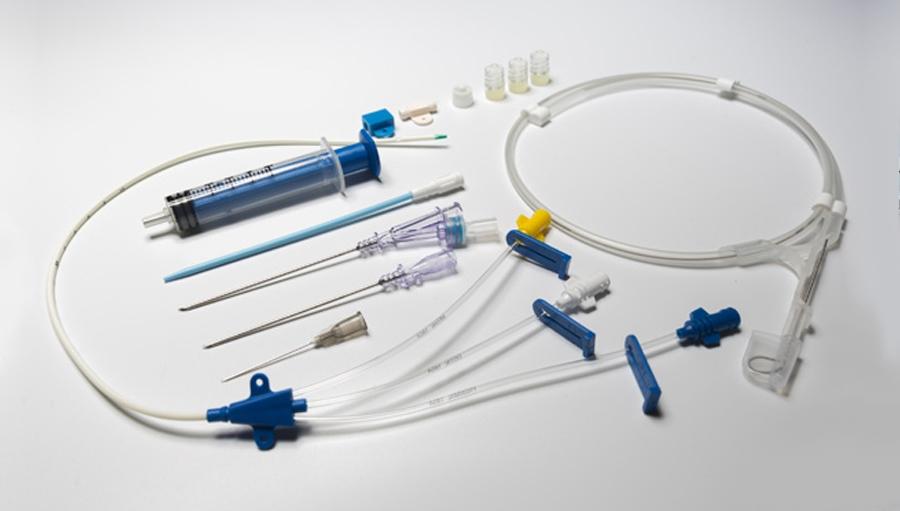Central Venous Catheter: A Lifeline for Delivering Medications and Fluids

A central venous catheter, commonly referred to as a central line, is a long, thin, flexible tube that is placed into a large vein in the neck, chest, or groin to administer medications, fluids, nutrients or blood products. Central lines are needed for patients who require frequent access to their bloodstream long-term or for patients who need treatments that would damage small arm veins.
Types of Central Venous Catheters
There are three main types of central venous catheters:
Peripheral Inserted Central Catheter (PICC)
A PICC line is inserted through a vein in the upper arm and threaded through a larger vein until the tip rests near the heart. PICC lines can remain in place for weeks or months to administer medications and fluids. They are less invasive than other central line options and have a lower risk of complications.
Tunnelled Catheter
Tunnelled catheters require a small surgical procedure where the Central Venous Catheters tunnelled under the skin of the chest before entering a large central vein near the heart. This protects the part of the catheter outside the body and decreases the risk of infection. Tunnelled catheters can remain in place for months at a time.
Implanted Port
An implanted port is a disc-shaped medical device placed completely under the skin of the chest. It has a small catheter that attaches to a large vein near the heart. An implanted port needs to be accessed through the skin using a special needle rather than having tubing exposed outside the body. This makes them very convenient for patients as the port remains concealed beneath the skin. Implanted ports can stay in place for years with proper maintenance.
Central Line Placement Procedure
All central line placement begins with the patient receiving local anesthesia. An ultrasound or X-ray helps the doctor see veins and guide placement of the catheter. For a PICC line, a small incision is made in the skin of the upper arm and the thin tube is inserted and guided to a large vein near the heart using ultrasound or X-ray.
For tunnelled catheters and implanted ports, a small incision is made in the chest area after numbing the skin. Tunnelled catheters are guided through a tunnel created under the skin, while ports are fully implanted under the skin with just the port disc remaining accessible. Doctors use sterile techniques and the whole procedure takes 30-90 minutes depending on the type of central line and patient factors.
Potential Central Line Complications
While very valuable for long-term treatment needs, central lines do increase the risk of certain complications compared to peripheral IVs. Some potential complications include:
Infection
Since the catheter provides direct access to the bloodstream, there is an increased risk of infection spreading from skin entry sites or along the catheter tract. Strict aseptic technique is important during line placements and any access of the catheter.
Thrombosis
Blood clots can form on the central line or around its tip, blocking flow. This is more common with longer term catheters and those made of certain materials. Heparin or other blood thinners may be used to help prevent this.
Misplacement
On rare occasions, catheters can accidentally be placed in the wrong position, like threading into an artery instead of a vein. Close ultrasound or X-ray guidance helps prevent this.
Catheter Damage or Breakage
Long term movement or friction can potentially cause damage or fracture of the catheter material over time. Special care is taken with dressings and access to prevent breakdown of the tubing.
Potential complications are carefully weighed against the benefits for each patient. Strict aseptic technique, dressing changes, and monitoring for signs of infection help minimize risks while maximizing the safe and effective use of central venous catheters.
Central Venous Catheter Maintenance
Proper maintenance is crucial for safe use and longevity of central lines. Standard care includes:
- Cleaning the skin with antiseptic before and after any access of the line. Using sterile gloves, drape, and dressing change technique.
- Daily assessment of the skin surrounding the insertion site for signs of redness, swelling, or discharge which could indicate infection.
- Securing the catheter firmly to prevent tugging or movement risking damage or dislodgement.
- Flushing the line routinely per doctor's orders with heparin or saline to prevent obstruction.
- Inspecting the dressing regularly and changing as needed to keep the area clean and dry.
- Contacting the doctor immediately for any fever, chills, pain, swelling, or leaking around the site which could signify a complication.
Central venous catheters play a vital role in delivering long-term treatments and hydration but require delicate handling and care to remain safely functioning. With proper technique, monitoring and prompt response to potential issues, they can greatly benefit patients medically for extended periods.
Get more insights on This Topic- Central Venous Catheters
Explore More Articles -Storage Basket Rack Market
- Art
- Causes
- Crafts
- Dance
- Drinks
- Film
- Fitness
- Food
- Oyunlar
- Gardening
- Health
- Home
- Literature
- Music
- Networking
- Other
- Party
- Religion
- Shopping
- Sports
- Theater
- Wellness
- IT, Cloud, Software and Technology


